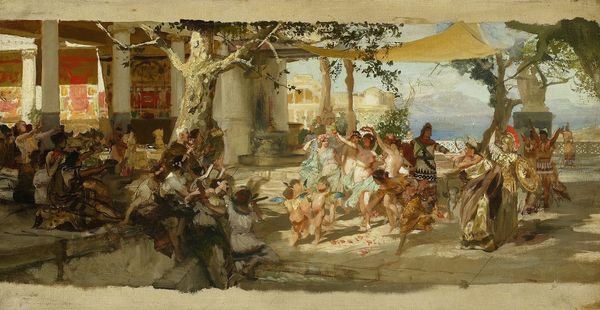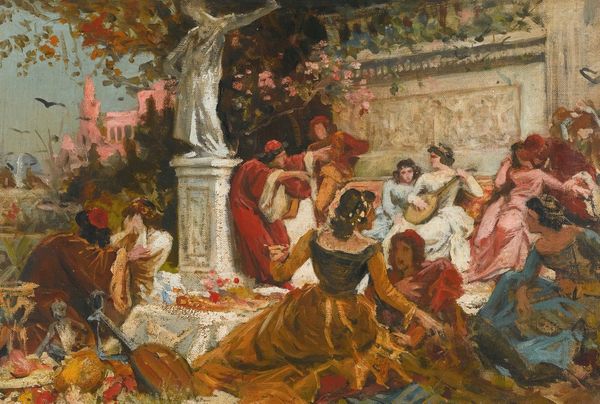
Dimensions: 390 x 763.5 cm
Copyright: Public domain
Henryk Siemiradzki painted "Phryne at the Poseidonia in Eleusis" in the late 19th century, using oil on canvas. In this work, Siemiradzki imagines a scene from ancient Greece, but it reflects more about the social and artistic climate of his own time. The painting depicts the courtesan Phryne, who was put on trial for impiety. Instead of defending her, the orator Hyperides revealed her naked body to the jury, who were so awestruck by her beauty that they acquitted her. Made in Poland, this painting reflects a fascination with classical antiquity and the power of female beauty. Siemiradzki paints Phryne as an object of admiration, her body idealized and presented for the male gaze. It's worth considering how the artistic institutions of the time, such as academies and salons, shaped this portrayal and reinforced conservative ideas about gender and beauty. To fully understand this painting, we can look into the history of academic painting in the 19th century and investigate the social role of women at the time.
Comments
No comments
Be the first to comment and join the conversation on the ultimate creative platform.













